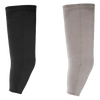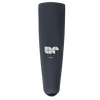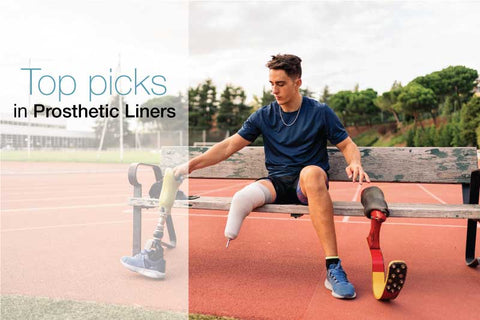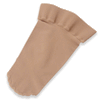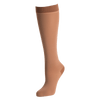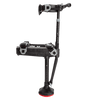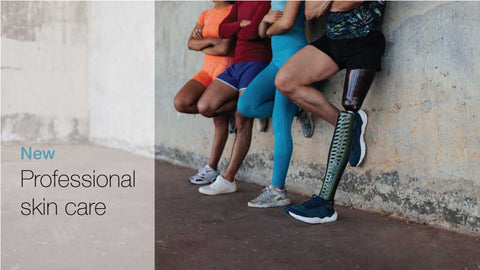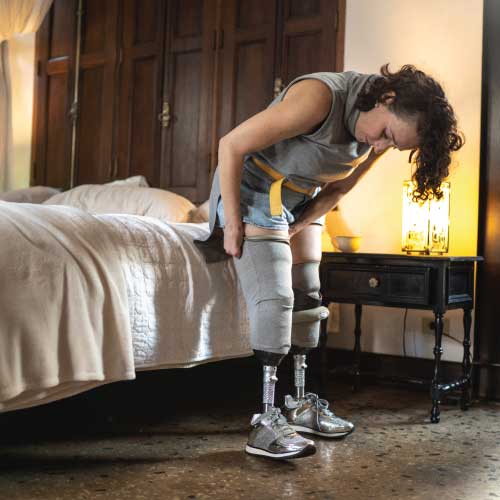Brain-Controlled Bionic Limbs Are Almost Here
Reading Time: 8 minutes
Recent engineering and modern computing advances have significantly reduced barriers to creating advanced prosthetic devices. And researchers are discovering methods to integrate these sophisticated machines seamlessly with the human body. Such is the case with a study published in July in Nature Medicine.

In this study, researchers explored a new integrated method that involves surgically reconstructing pairs of muscles. This technique gives patients a heightened sense of proprioception and movement in their bionic limbs. The muscle signals directly control the robotic joints, allowing users to operate the prosthesis using their brains.
As a result, individuals with below-knee limb loss experienced a more natural walking ability and improved performance on slopes, stairs, and uneven surfaces.
In an interview with Science News, bioengineer Tyler Clites, who contributed to the technique’s development a few years ago, notes that engineers often view biology as an obstacle to bypass.
But he said that viewing the human body as an integral part of the engineering process, that is working alongside the machine, can enhance their interaction.
This perspective is propelling a new wave of methods aimed at reengineering the body for better compatibility with technology. One such approach is “anatomics,” which differs from traditional bionic solutions.
Clites emphasized that the challenges faced by traditional bionics were not rooted in engineering. Instead, the way the body was modified during amputation left it unable to effectively control the prosthetic limbs created by engineers.
What is anatomics?
Anatomics involves restructuring the human body to better integrate with prosthetic devices. This approach views the body and machine as interconnected systems. In contrast, bionics primarily aims to develop mechanical and electronic systems that replicate biological functions. Bionics often treats the human body as a static framework to be worked around.
The core of anatomics lies in altering the body’s physical structure, which may involve redirecting nerve pathways, reconstructing muscle tissue, and using bones as stable foundations. These innovative methods enhance the interaction and communication between artificial limbs and the human nervous system.
While research in this field has been ongoing, anatomics-based devices have not yet left the laboratories for practical applications in clinical and commercial settings. Let’s delve deeper into how researchers are working to fuse human anatomy with prosthetic technology.
Rebuilding muscles
Proprioception is our body’s ability to understand where it is in space; it’s key for movement, especially when walking. Muscles send important signals to our brain, informing it about our position, movements, and the forces acting on our body. And this communication relies mainly on pairs of muscles called agonist-antagonist pairs, where one muscle contracts while the other stretches. An example is the biceps (agonist) and the triceps (antagonist).
However, people who undergo traditional amputations often lose this sense of proprioception. The July study uses a new technique called the agonist-antagonist myoneural interface (AMI) to fix this issue. This surgical method reconnects these muscle pairs and uses the signals they produce to control prosthetic joints. As a result, the person can actually “feel” their prosthetic limb.
This study was part of a clinical trial led by MIT bionicist Hugh Herr and his team. It involved 14 individuals who had lost a limb below the knee. Seven of the participants had the AMI procedure, while the other seven had typical amputations.
Those who received the AMI system could walk about 40% faster, increasing their speed from 1.26 meters per second to 1.78 meters per second, which is comparable to the walking speed of people without limb loss.
Utilizing bones
Many people who use prosthetic limbs often experience pain and discomfort, especially from the prosthetic socket. The issue arises because the soft tissue in the residual limb isn’t great at supporting weight, while our bones are designed to carry loads. This mismatch can lead to strain, causing tissue damage and discomfort, which sometimes makes users stop using their prostheses altogether.
Osseointegration offers a solution to this problem. In this procedure, a titanium rod is implanted directly into the bone, securely attaching the prosthetic limb and providing better stability, strength, and comfort.
Although this technique was first used in 1990, it didn’t gain widespread acceptance until recently. In 2020, the US Food and Drug Administration approved an implant system called OPRA, making it more accessible.
However, there’s a significant downside: the titanium rod passes through the skin, which creates a permanent opening that can lead to infections. Still, according to bioengineer Cindy Chestek in an interview with Science News, aside from the risk of infection, the benefits of osseointegration outweigh the drawbacks.
Redirecting nerves
Nerves have the potential to enable prosthetic limbs to communicate directly with the brain. However, early attempts at this connection faced challenges because the signals sent by nerves were quite weak. So far, researchers have only been able to place wires inside nerves in laboratory settings.
Currently, most advanced bionic prosthetics rely on muscles instead. When a nerve stimulates a muscle, that muscle generates much stronger electrical signals. These signals can be detected by electrodes placed on the skin, allowing the prosthetic limb to be controlled effectively.
One issue is that the nerves that used to control a missing limb do not reconnect to muscles after amputation; instead, they can form painful growths called neuromas. To address this issue, researchers have developed a surgical technique known as Targeted Muscle Reinnervation (TMR). In this procedure, a surgeon disconnects the nerves that used to link to certain muscles and connects them to available muscles nearby. Over time, the nerves grow into these muscles, which then amplify the signals that can be used to control the prosthetic.
In addition to improving prosthetic control, TMR helps alleviate the pain caused by neuromas, making it a beneficial treatment for many patients.
However, one downside of TMR is that it cannibalizes existing muscles, which limits the number of signals that can be generated for controlling prosthetic devices. This can be especially challenging for individuals with amputations above the elbow or knee, where there are fewer muscles available to control multiple prosthetic joints.
But there is encouraging news: a new technique called regenerative peripheral nerve interface (RPNI) can help address this issue. In this procedure, surgeons take small muscle grafts from other body parts and connect nerves to these grafts. By doing this, the nerves can be carefully separated into individual fibers, creating more targets for signal generation, as explained by Chestek.
The challenge with using these small muscle grafts is that it is difficult to capture signals from them with surface electrodes. As a solution, the study’s authors suggest using implanted electrodes, which are more invasive but provide clearer signals. However, there are some regulatory challenges with these implants.
Some researchers are exploring wireless systems as an alternative, but another effective solution might be to combine RPNIs with osseointegration. With this method, the wires connecting the implanted electrodes to the prosthetic can run through a titanium bolt. A 2023 study showcased a bionic arm that used this approach, allowing the user to control every finger of the robotic hand.
Continuing to innovate
As of October 2024, Clites and colleagues are working on nine or 10 projects with surgeons at the UCLA anatomics lab. Among the things they’re working on is a way to attach prosthetic limbs without leaving a permanent hole in the bone, which typically happens with osseointegration.
Instead of using a titanium bolt, they are studying placing a piece of steel inside the limb and an electromagnet in the prosthetic socket. This magnet is designed to hold the prosthetic socket onto the residual limb without putting stress on it, as the magnetic force takes care of bearing loads. The strength of the magnet can adjust based on what the person is doing, like walking or standing still.
Meanwhile, at MIT, Herr is developing a technique called magnetomicrometry. This involves placing tiny magnetic spheres inside the muscles and using special devices called magnetometers to track their movement. Herr expects that a commercial product based on this technique will be available within five years.
Overall, the future of connecting bionic limbs to the human body looks promising. Researchers are working to improve sensory feedback, create better control mechanisms, and enhance how prosthetic limbs integrate with our bodies. These advances may lead to a smoother and more natural experience for users, making the distinction between biological and artificial limbs less noticeable.

